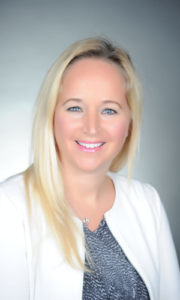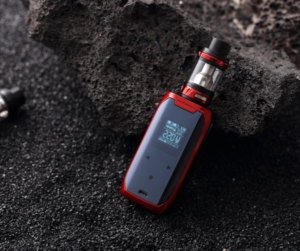Beth Sandy, MSN, CRNP
As oncology continues to gravitate towards precision medicine and a personalized approach to treatment, we are seeing increased numbers of oral targeted therapies being approved and prescribed as treatment. Oral therapies carry the added complication of copays and deductibles when it comes to insurance coverage. While intravenous cancer treatments are billed to the major medical part of an insurance plan (for example, Medicare Part B), oral treatments are billed to the prescription plan, which is often fraught with high copays and stringent rules for patient assistance from pharmaceutical companies. There are 3 main subsets of insurance coverage to address for this topic: uninsured, Medicare, and commercial plans.
The Uninsured
For patients who are diagnosed with cancer, the rules vary state by state, but in general they follow a similar pattern. A cancer diagnosis is considered catastrophic or emergent, which renders a patient eligible for that state’s Medicaid plan(s) if they have little income, no income, and/or no insurance, whether they are a documented citizen or not. If they are undocumented, there is more paperwork to fill out, but, in the end, they will qualify based on verifiable income requirements. A note of caution: Medicaid coverage may only apply to services for the catastrophic diagnosis (of cancer) and may not apply for other medical conditions that are not considered emergent or catastrophic.
The income requirements for Medicaid coverage in Pennsylvania (where I practice) are:1
- income of less than 133% of the federal poverty level for a patient who is not working or married to someone who is working;
- for a working person who is a citizen with no insurance, where the income is less than 250% of the federal poverty level, they would qualify for Medical Assistance for Workers with Disabilities (MAWD).
For the majority of patients with Medicaid, oral therapies are covered with minimal or no copays, once the insurance is in place and active, with some exceptions. Again, if they are having trouble getting social services in place, applying for a free-drug program with the pharmaceutical company may be an option.
Medicare
For our patients with Medicare or commercial Medicare replacement plans, we often have several issues with coverage. Because Medicare is a government-sponsored insurance plan, pharmaceutical companies are not allowed to provide assistance with copays and deductibles for these patients. Medicare Part D is the prescription coverage program for Medicare. However, there is a gap in coverage often referred to as the “donut-hole.” In 2023, you will reach this gap in coverage once you (your own out-of-pocket) and your plan have spent $4,660 on prescription drugs.2
Once you have reached the donut-hole coverage gap:
- The patient is responsible for paying 25% of the cost of the drug. For example, many oral cancer therapies cost between $20,000 and $40,000 a month, making the out-of-pocket costs around $7,400 out of pocket, which tends to come all at once.
- Once the patient gets to $7,400 out-of-pocket costs, the patient then falls into catastrophic coverage where then they pay a smaller copay out of pocket for the remainder of the calendar year. This cycle repeats every year starting in January.3
There is an option through the pharmaceutical companies though if you meet income requirements. Since they cannot help with the donut hole or copays, they often offer free-drug programs for patients who cannot afford the high Medicare coverage gap payments. Usual income requirements generally range from around $70,000 for single-income households and $100,000-$120,000 for dual-income households. The income is often only based on Social Security or wages if the patient is still working. It does not include individual retirement account, pension income, or assets. Many patients with Medicare end up qualifying and receiving free drug from the pharmaceutical company.
Commercial Insurance
For commercially insured patients, the process is generally less complicated. Patients will often have a copay for the drug as a brand-name drug or as a tiered copay, in which usually the oral medication for cancer treatments is the top tier for copays since they tend to be expensive. However, most pharmaceutical companies will offer a “copay assistance card” or program to help bring that copay down to $50, $20, or even $0 depending on your income. We heavily rely on the specialty pharmacies to get prior authorizations and help patients apply for copay cards and assistance with these commercial plans. Some commercial insurance plans are starting to follow suit with Medicare and create capitations on coverage, requiring high out-of-pocket costs for a period of time until a deductible is met. Each plan is very different, and we must work with the insurance, specialty pharmacies, and the patients to obtain the drug with what patients can afford.
Conclusions
There are always cases that fall between the cracks, where a patient makes a little too much to qualify for the program yet struggles to make the several thousands of dollars out-of-pocket cost, year after year especially. This can be difficult if a patient starts a medication in October or November and pays the high donut-hole copays only to have to pay it again in January-March. We often rely on charitable organizations, donations, and grants to help these patients.
In conclusion, while the costs are very high for these oral oncology agents, most companies have some sort of copay assistance or free-drug program as the safety net so that patients are not left without their medications. Involving social workers and fostering open communication with patients to allow them to tell us about their finances can help providers get the patients the medications they need.
I would like to thank Shawn Carney at University of Pennsylvania who works in our financial assistance office for contributions to this manuscript.

References
- Medical Assistance, General Eligibility Requirements (2023, June). Department of Human Services. https://www.dhs.pa.gov/Services/Assistance/pages/ma-general-eligibility.aspx
- Costs in the coverage gap (2023, June). https://www.medicare.gov/drug-coverage-part-d/costs-for-medicare-drug-coverage/costs-in-the-coverage-gap
- Catastrophic coverage (2023, June). https://www.medicare.gov/drug-coverage-part-d/costs-for-medicare-drug-coverage/catastrophic-coverage







